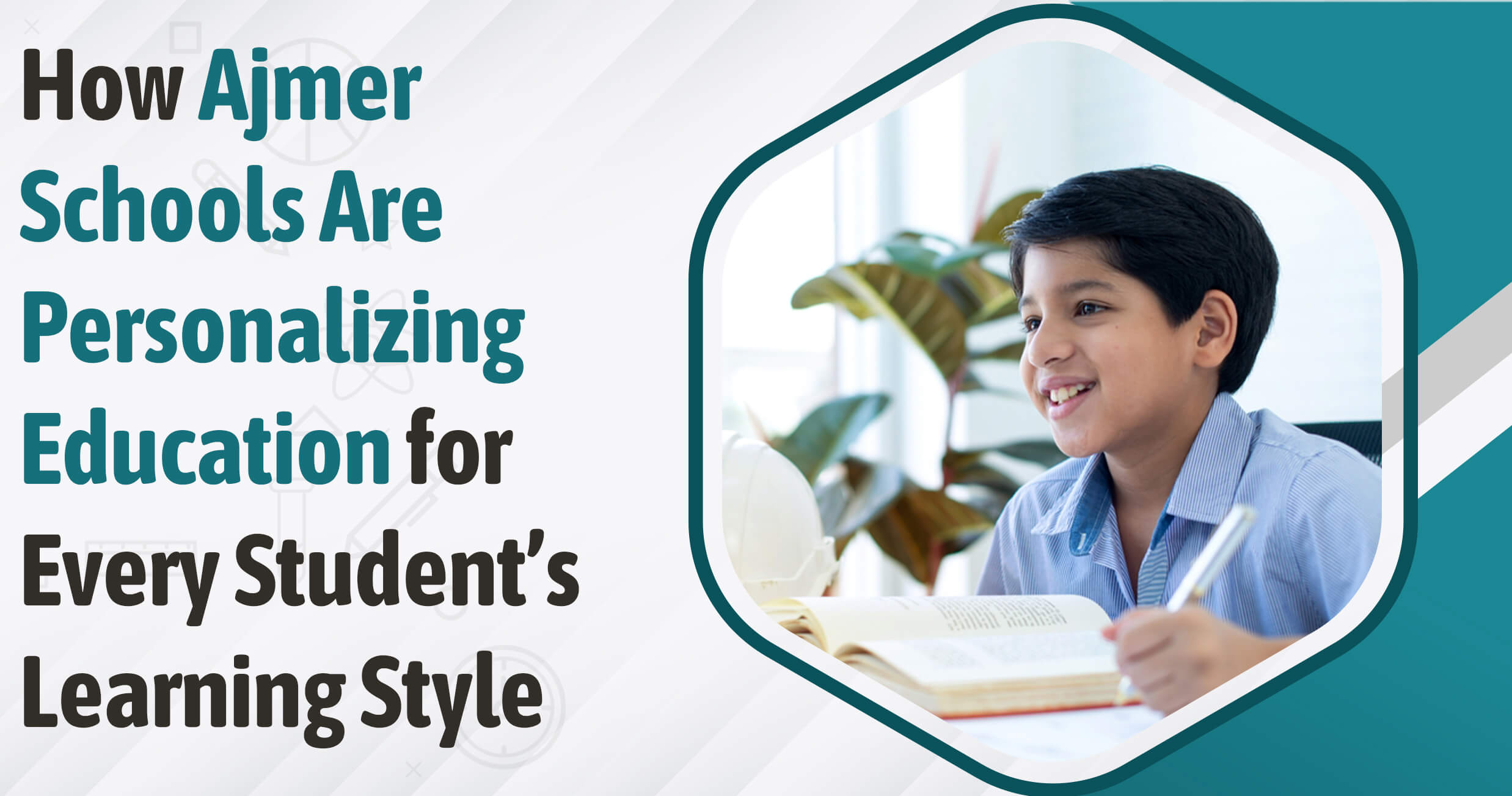
As education evolves rapidly, a cookie-cutter approach to learning is not the solution. Each child is unique and has strengths, interests, and ways of learning. With this in mind, schools are now moving towards personalized learning in Ajmer, which means that instead of making the child fit into the education system, the study system is being made to fit the child. But what does this mean for students and parents, and how does it affect the learning experience? Let’s explore.
A student processes information differently. Some are visual learners, some learn better hands-on, and some are auditory learners. Usually, the classroom model considers the same methods of instruction; however, Ajmer schools are now introducing differentiated learning strategies that incorporate varied learning styles.
For example, those who learn best with visual information are offered infographics, diagrams, and educational videos. In turn, kinaesthetic learners benefit from interactive projects and applying concepts in real life, bringing greater interest and efficiency to learning. Student-centered education allows every child to understand concepts that make the most sense to them.
Adaptive teaching helps teachers personalize lesson plans for their students. Rather than delivering the same lecture to an entire class, educators use technology-enabled tools, assessments, and feedback loops to calibrate the content for each student’s pace and level of understanding.
A math teacher, for instance, could harness AI-based platforms that deliver students questions suited to their skill levels. For example, if a student struggles with algebra, the system recognizes this gap and provides targeted exercises to help consolidate understanding. Similarly, many language teachers use storytelling, role-playing, and phonetics-based learning to appeal to different learners, making lessons much more immersive and effective.
Moreover, interactive learning tools like virtual labs, online simulations, and gamified quizzes help to visualize the concepts being learned. Some schools are adopting hybrid learning approaches, allowing students to learn through a combination of regular classroom time and digital resources. Such tools accommodate learners’ preferences while ensuring students actively participate in their studies.
The one-on-one teacher support, peer mentoring, and small group discussion are other central aspects of individualized instruction. Ajmer Schools also have flexible seating (an open seating plan-based space that promotes collaborative work among children and children using the space as per their comfort) where students can work in a group or individually. In short, personalized learning plans help ensure that students who need extra help and advanced students are encouraged to explore beyond the syllabus.
This process will help improve academics and create confidence and curiosity. When children feel respected and understood, they will be more naturally motivated to pursue their studies.
In addition, in student-centered education, project-based learning is an essential component. Students learn critical thinking, teamwork, and problem-solving skills by solving real-world problems. Schools laud projects that cut across disciplines such as the sciences, humanities, and others for a more rounded appreciation of issues. But rather than just teaching all about that thing in a textbook, the lessons can use this experiential learning to show students that what they are learning can relate to life as it is, in the moment. This makes them more curious and encourages them to dig deeper and become more involved.
At home, parents can complement in-school learning with personalized instruction. Schools work hand-in-hand with parents through regular feedback and interactive sessions, workshops, digital tracking systems, and more – where they can keep track of their child’s progress. Finding ways for children to pursue their interests outside of the classroom, ensuring that they have a wide variety of learning materials to build from, and keeping a chat open with their teachers can all go a long way in helping them learn effectively.
Furthermore, several schools in Ajmer have parental involvement programs that help parents build skills to be partners in their child’s learning. From fostering a study environment at home to incorporating educational activities into daily routines, these minor adjustments can significantly improve a child’s academic success.
With personalized learning becoming the new standard, the schools in Ajmer are setting a benchmark in student-centric education. Institutions like Satguru International School (SIS) and Ajmer are implementing these up-to-date methodologies, providing children with holistic education as institutions try to recognize which methodology a particular child responds to better. These learning styles in schools are changing the education scene in Ajmer by creating an atmosphere where students can grow at their own pace.
We, as parents, have the power to change the course of our child’s educational journey by selecting a school that celebrates individuality and innovation in learning. No longer is the question simply about best academic performance, but how well a school can accommodate your child’s learning style. Our investment in an organization that focuses on flexibility, engagement, and student success is an investment that will make every learner’s future bright and promising.